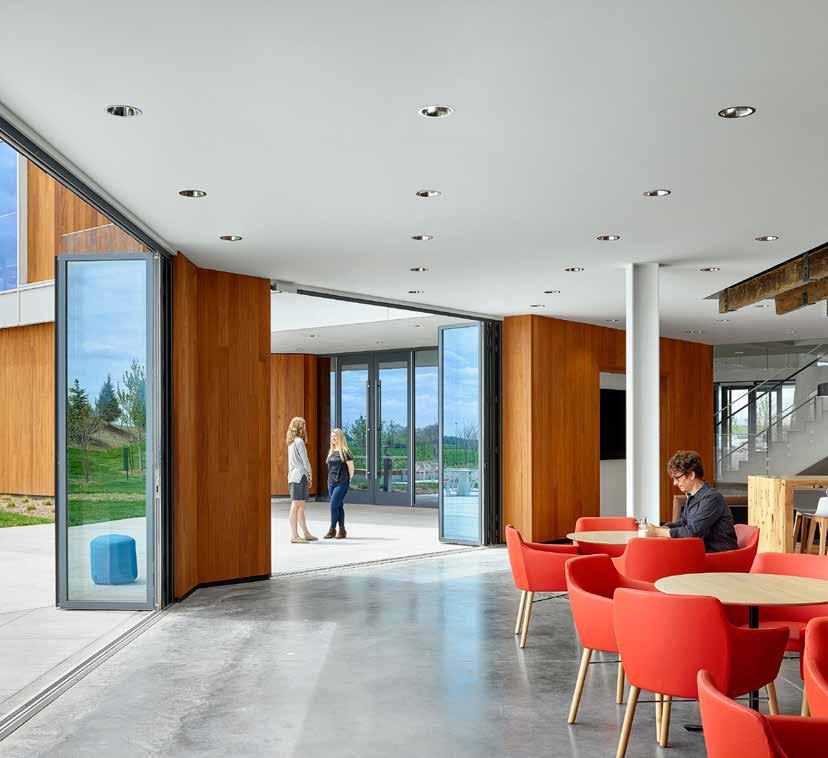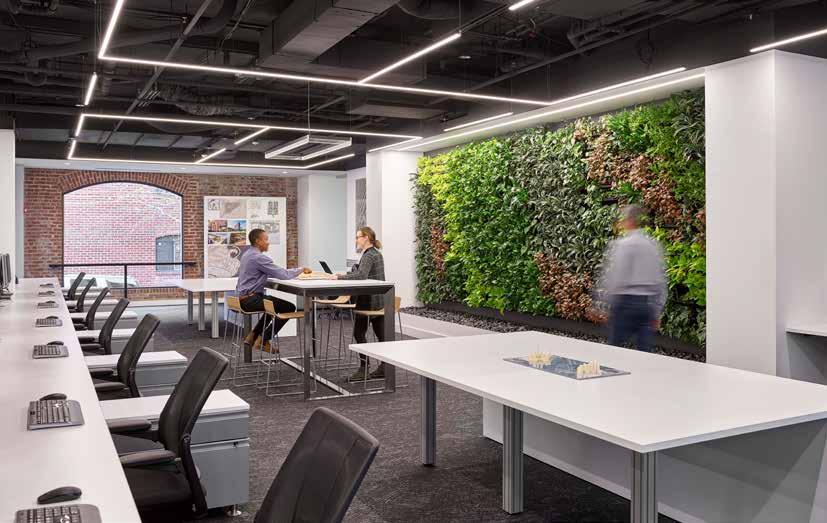
3 minute read
ARCHITECTURE
Going Green: At Home and in the Office.
The average American spends more than 93 percent of his/her life indoors. And buildings – residential and commercial – are one of the largest contributors to global carbon emissions, responsible for nearly 40 percent of all CO2 emissions annually. Whether at home or in the office, one thing is certain: the spaces we occupy have a direct impact on the environment and our well-being.
Advertisement
A WORTHWHILE INVESTMENT
The investment in green infrastructure has proven financial, environmental, and social benefits. Green buildings boast lower operational and maintenance costs. And sustainable design solutions – like biophilia and access to natural light – are proven to increase productivity and job satisfaction. Sustainably – designed spaces also bolster community, with people reporting a stronger sense of connection with colleagues. So what can you do to make your home or office space a bit greener? Vanessa Hostick, senior sustainable design specialist with HOK, shares simple strategies that can reduce your personal environmental footprint, improve your health, and leverage the power of sustainable design.
BRING ON THE PLANTS
Humans innately desire to be connected to nature – and they experience benefits like enhanced creativity and productivity when they are. Biophilic design incorporates natural materials, light, vegetation, and views of nature into the built environment. Evaluate your space and consider opportunities to better connect to the outdoors. Introducing potted plants, which naturally filter toxins and improve air quality, is an easy solution. Living walls can serve as an Instagrammable design feature and reap health rewards for staff. If it isn’t possible to bring greenery into your space, consider incorporating photos and graphics that depict nature, which are proven to have similar benefits. Natural light is also critical to biophilia. If you’re in a large office space but not by a window, take matters into your own hands. Use communal seating areas, meeting rooms, and gathering areas that have windows as often as possible.

CONSIDER YOUR WASTE
Waste isn’t fun to talk about, but managing it is essential to reducing your environmental footprint. Offices have an opportunity to make simple but effective decisions on behalf of staff that help reduce waste. Investing in reusable tableware, reducing the availability of single-use plastics, incorporating a compost bin, and discouraging printing can help make staff aware of their impact on the environment. Recycling bins at each workstation and simple, educational signage can reinforce efforts. These same strategies can be easily implemented at home. GET MOVING
If you’re still working from home, consider scheduling regular breaks to step outdoors, midday walks, and investing in a sit-to-stand desk or a walking pad to keep your body active and engaged.
At the office, opt for the stairs when moving between floors. Prominent feature stairs are often strategically placed to encourage activity. Employers can also provide a variety of spaces, formal and informal, for people to work. Giving staff choice and autonomy – and supporting a culture that allows people to work how they want – are also critical



to encouraging movement that have a direct impact on wellbeing.
EMBRACE GREEN SPACE
Open green space – whether in your backyard, embedded in downtown, or incorporated into a corporate campus – is essential for the health of occupants. In offices, outdoor meeting rooms can encourage staff to collectively step outdoors. Terraces adjacent to workstations make it easier for people to get fresh air. And outdoor amenities – from a system of trails to bocce ball to outdoor café seating –can create connectivity to nature. If you’re working from home, consider how you can use green space more effectively. Step outside for calls or set up an auxiliary workstation on a porch or patio. The links between sustainability and wellbeing have never been clearer. These simple design strategies aren’t the only solution, but they are a step in the right direction. Whether at home or in the office, people deserve spaces that are restorative and positively impact their environment
ABOUT THE AUTHOR
Vanessa Hostick is the sustainable design leader for HOK’s Kansas City studio. She has dedicated her career to lessening the impact of buildings on the environment and creating healthy spaces for occupants.







